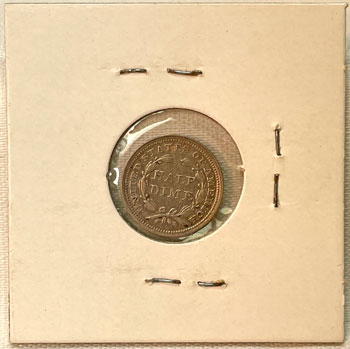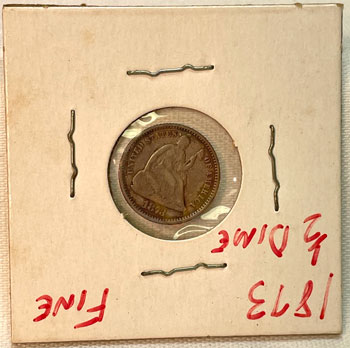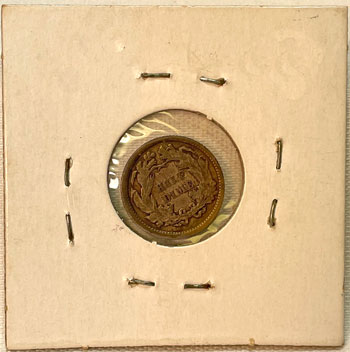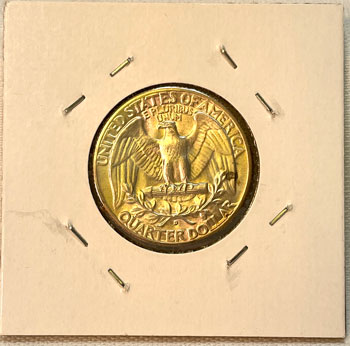© Copyright Atlanta Coin Expositions, 2008-2025. All Rights Reserved.
Several of the links on the pages within this web site go to affiliate vendors.
A vendor affiliation can mean a small monetary compensation to the web site owner at no additional cost to you.
Several of the links on the pages within this web site go to affiliate vendors.
A vendor affiliation can mean a small monetary compensation to the web site owner at no additional cost to you.
Coin Show
Information
Shop
General
Next Monthly Coin Show
Coin Show - Monthly Notes for June 2022
Mark your calendar and join us at the next show on Sunday, May 15, 2022 in the Joe Mack Wilson ballroom.
The bourse will be filled with dealers and their displays of coins, currency, bullion, exonumia, scripophily, semi-precious stones, jewelry and other interesting items in the dealers' showcases.
Doors open at 9am for guests to visit the bourse for buying, selling, trading or just looking at the different collectible and historical items in the dealers' displays.
In the event circumstances impact the show, check with this web site, the recorded show message (770-772-4359) or join our mailing list to receive information about the shows.
Make a reminder note and visit the next Greater Atlanta Coin Show on Sunday, May 15, 2022 in the Joe Mack Wilson ballroom to join the fun and view the items on the bourse.
The bourse will be filled with dealers and their displays of coins, currency, bullion, exonumia, scripophily, semi-precious stones, jewelry and other interesting items in the dealers' showcases.
Doors open at 9am for guests to visit the bourse for buying, selling, trading or just looking at the different collectible and historical items in the dealers' displays.
In the event circumstances impact the show, check with this web site, the recorded show message (770-772-4359) or join our mailing list to receive information about the shows.
Make a reminder note and visit the next Greater Atlanta Coin Show on Sunday, May 15, 2022 in the Joe Mack Wilson ballroom to join the fun and view the items on the bourse.
1873 Half Dime Coin
The June 2022 Greater Atlanta Coin Show enjoyed many visitors that met with the dealers amid their displays of coins, currency, bullion and other collectibles.
We thank everyone that contributed to the show, whether a guest, a dealer, security or hotel staff. All of you are appreciated.
Each month the show and its dealers offer guests the opportunity to buy, sell, trade or just visit the history of the coins, currency, bullion and other collectibles on display.
The dealers' showcases include a variety of treasures from ancient coins of the world to modern day gold and silver, from historical currency to recent collectible notes, from coins to fill a book to high-end graded specimens, and the list goes on to medals, stock certificates, jewelry, semi-precious stones, and other items to pique your interest.
We thank everyone that contributed to the show, whether a guest, a dealer, security or hotel staff. All of you are appreciated.
Each month the show and its dealers offer guests the opportunity to buy, sell, trade or just visit the history of the coins, currency, bullion and other collectibles on display.
The dealers' showcases include a variety of treasures from ancient coins of the world to modern day gold and silver, from historical currency to recent collectible notes, from coins to fill a book to high-end graded specimens, and the list goes on to medals, stock certificates, jewelry, semi-precious stones, and other items to pique your interest.
1858 Half Dime Coin
1934-D Quarter Coin
1937-S Quarter Coin
Ten-Dollar National Currency Washington, Georgia
In addition, the dealers provide free verbal appraisals based on current market values for coins and currency brought to the show for evaluation.
For our June show, the weather chose to provide glimpses of summer heat with temperatures in the low 90s and increased humidity. But the weather did not deter our guests from enjoying their day.
For our June show, the weather chose to provide glimpses of summer heat with temperatures in the low 90s and increased humidity. But the weather did not deter our guests from enjoying their day.
On the bourse, discussions included current events in addition to coins and collectibles. Top of mind, of course, was the dramatic increase in gas prices and the increased cost of day to day living - otherwise known as inflation.
People are worried and not happy with the increases. Many are looking at silver and gold as a hedge against the future increase cost of goods.
Now, let's take a look at just a few coins in 2x2s along with an old Georgia national bank note.
People are worried and not happy with the increases. Many are looking at silver and gold as a hedge against the future increase cost of goods.
Now, let's take a look at just a few coins in 2x2s along with an old Georgia national bank note.


Our first example is the Liberty Seated 1858 Half Dime Coin.
The US Mint began producing the half dime coins in 1794 and end production in 1873.
Changes in the design and changes in legislation generated several different varieties throughout the years of the half dime.
This example, the 1858 half dime coin, is one of the more common dates, but this year also has date varieties.
For this year, the Mint used Christian Gobrecht's seated liberty design, which was used on other silver denomination coins of that year as well.
The US Mint began producing the half dime coins in 1794 and end production in 1873.
Changes in the design and changes in legislation generated several different varieties throughout the years of the half dime.
This example, the 1858 half dime coin, is one of the more common dates, but this year also has date varieties.
For this year, the Mint used Christian Gobrecht's seated liberty design, which was used on other silver denomination coins of that year as well.
The Philadelphia mint location produced 3.5 million of the 1858 half dime coins for circulation and 300 proof version. The circulation coins included the re-punched high date and over inverted date varieties.
Our example, however, is a regular strike without the date variety.
During the years of production, the weight of the half dime changed from 1.35 grams to 1.34 grams to 1.24 grams.
The composition also changed from 0.8924 silver and 0.1076 copper to 90% silver and 10% copper. This change in fineness coincided with the first weight change.
Even though the 1858 half dime is considered "common," this coin is still a nice specimen to add to a collection.
Our example, however, is a regular strike without the date variety.
During the years of production, the weight of the half dime changed from 1.35 grams to 1.34 grams to 1.24 grams.
The composition also changed from 0.8924 silver and 0.1076 copper to 90% silver and 10% copper. This change in fineness coincided with the first weight change.
Even though the 1858 half dime is considered "common," this coin is still a nice specimen to add to a collection.


The next coin is another half dime and is from the last year of production for the half dime coin.
Only the Philadelphia and San Francisco mint locations struck the 1873 half dimes, and they produced just over 1 million coins, fewer than the early years but more than their production in the 1860s.
A big difference between this 1873 coin and the 1858 above is seen on the obverse.
The earlier coins had stars on the obverse with UNITED STATES OF AMERICA on the reverse.
In 1860 through 1873, the legend replaced the stars on the obverse.
Only the Philadelphia and San Francisco mint locations struck the 1873 half dimes, and they produced just over 1 million coins, fewer than the early years but more than their production in the 1860s.
A big difference between this 1873 coin and the 1858 above is seen on the obverse.
The earlier coins had stars on the obverse with UNITED STATES OF AMERICA on the reverse.
In 1860 through 1873, the legend replaced the stars on the obverse.
Why did the half dime disappear?
Congress approved legislation in May 1866 for the Mint to produce five-cent coins of 75% nickel and 25% copper. Thus, the five-cent nickel with the same value of the silver half dime began circulation.
In 1873, they (the infamous "they") decided the half dime could be discontinued in favor of the nickel five-cent coin.
Today, PCGS (Professional Coin Grading Service) estimates 600 of the 1872 half dimes still exist and can be found rather easily in grades up to MS-64.
This 1873 half dime does not have an official grade and holder, but it is still a nice example of a coin that has been out of production roughly 150 years.
Congress approved legislation in May 1866 for the Mint to produce five-cent coins of 75% nickel and 25% copper. Thus, the five-cent nickel with the same value of the silver half dime began circulation.
In 1873, they (the infamous "they") decided the half dime could be discontinued in favor of the nickel five-cent coin.
Today, PCGS (Professional Coin Grading Service) estimates 600 of the 1872 half dimes still exist and can be found rather easily in grades up to MS-64.
This 1873 half dime does not have an official grade and holder, but it is still a nice example of a coin that has been out of production roughly 150 years.


This coin is a beautiful example of the silver Washington quarter dollar coin.
They intended the Washington quarter to commemorate the 200th anniversary of George Washington's birth.
The first version of the Washington quarter began in 1932. The silver versions of the coin continued into 1964.
Of course, today, the Washington quarter continues but its reverse has seen many changes through the years including the bicentennial, the state quarter, the America the Beautiful, the Crossing the Delaware, and the American Women reverse.
But, this coin is from its early days.
Per David Hall from the PCGS website:
They intended the Washington quarter to commemorate the 200th anniversary of George Washington's birth.
The first version of the Washington quarter began in 1932. The silver versions of the coin continued into 1964.
Of course, today, the Washington quarter continues but its reverse has seen many changes through the years including the bicentennial, the state quarter, the America the Beautiful, the Crossing the Delaware, and the American Women reverse.
But, this coin is from its early days.
Per David Hall from the PCGS website:
"The 1934-D is one of the key dates of the Washington quarter series. While not particularly rare in circulated grades, this is a scarce coin in mint state and a rare coin in Gem condition.
"I'd speculate that in the depths of the Great Depression, not a lot of uncirculated quarter rolls were saved as a roll of quarters is $10 face value and that was a ton of money at the time. Mint state examples are often frosty and well struck, there just are not that many of them."
Of the just over 3.5 million quarter coins struck in Denver in 1934, PCGS estimates roughly 300,000 survive today.
This coin is a beautiful example that has survived the years without wear.
"I'd speculate that in the depths of the Great Depression, not a lot of uncirculated quarter rolls were saved as a roll of quarters is $10 face value and that was a ton of money at the time. Mint state examples are often frosty and well struck, there just are not that many of them."
Of the just over 3.5 million quarter coins struck in Denver in 1934, PCGS estimates roughly 300,000 survive today.
This coin is a beautiful example that has survived the years without wear.


Our next coin is another Washington quarter and another key coin in this series.
Comments from PCGS:
David Hall:
"The 1937-S is one of the key dates of the Washington quarter series in both circulated and mint state grades. In the 1960s, when markets were made in circulated rolls of all better date then modern coins, a roll of circulated 1937-S quarters was a 'hot' item.
"In fact, in circulated condition, this issue was considered the third rarest of the series after only the 1932-D and 1932-S. The buyers focused on the fact that this issue is the third lowest mintage of the series...and probably rightly so."
Comments from PCGS:
David Hall:
"The 1937-S is one of the key dates of the Washington quarter series in both circulated and mint state grades. In the 1960s, when markets were made in circulated rolls of all better date then modern coins, a roll of circulated 1937-S quarters was a 'hot' item.
"In fact, in circulated condition, this issue was considered the third rarest of the series after only the 1932-D and 1932-S. The buyers focused on the fact that this issue is the third lowest mintage of the series...and probably rightly so."
In 1937, the San Francisco Mint struck just over 1.6 million of the Washington quarter coins.
Today, PCGS estimates a survival rate of 165,000 across all grades with 32,000 of those in MS-60 or higher grades.
Per Jaime Hernandez: "In low grades it commands about 5 times more than the generic dates in the series and in Uncirculated grades it commands even higher premiums than the most common dates."
Though heavily toned, this particular coin is a very nice specimen of another key date Washington quarter coin.
Today, PCGS estimates a survival rate of 165,000 across all grades with 32,000 of those in MS-60 or higher grades.
Per Jaime Hernandez: "In low grades it commands about 5 times more than the generic dates in the series and in Uncirculated grades it commands even higher premiums than the most common dates."
Though heavily toned, this particular coin is a very nice specimen of another key date Washington quarter coin.


During this bank's tenure, they issued $854,300 in ten-dollar notes.
At the close of the bank, they had $50,000 outstanding notes with $8825 large notes out.
Odd, isn't it, that they only did $10 notes, yet they have $8825 outstanding. One source notes they attributed damaged notes at partial value. Perhaps they received one half of a $10 note.
This specimen is particularly worn, but just think of the history it could tell about its hometown east of metro Atlanta and near the South Carolina border.Our last example for this month is a national currency note from a bank in Georgia.
This note came from the National Bank of Wilkes at Washington with the bank's charter number, 8848, as part of the notes design.
The note is a series 1902, however this bank began service in 1907 and ended in January 1931.
At the close of the bank, they had $50,000 outstanding notes with $8825 large notes out.
Odd, isn't it, that they only did $10 notes, yet they have $8825 outstanding. One source notes they attributed damaged notes at partial value. Perhaps they received one half of a $10 note.
This specimen is particularly worn, but just think of the history it could tell about its hometown east of metro Atlanta and near the South Carolina border.Our last example for this month is a national currency note from a bank in Georgia.
This note came from the National Bank of Wilkes at Washington with the bank's charter number, 8848, as part of the notes design.
The note is a series 1902, however this bank began service in 1907 and ended in January 1931.
Our last example for this month is a national currency note from a bank in Georgia.
This note came from the National Bank of Wilkes at Washington with the bank's charter number, 8848, as part of the notes design.
The note is a series 1902, however this bank began service in 1907 and ended in January 1931.
This note came from the National Bank of Wilkes at Washington with the bank's charter number, 8848, as part of the notes design.
The note is a series 1902, however this bank began service in 1907 and ended in January 1931.
Interestingly, the cashier and bank president signatures are missing from the note. It could be the ink faded over time, or the note may not be signed.
Initially, the notes were not legal tender unless signed, however legislation in 1892 made unsigned notes legal currency as well.
This bank only ordered notes of $10 denomination and had four different varieties, the 1902 red seal, the 1902 date back, the 1902 plain back and the 1929 small size.
The notes were printed four to a page with all four having the same serial number but a different position letter.
For new plates, the position of the note was A, B, C or D. When new plates had to be used, they changed the letter positions.
This particular note was in position G.
Initially, the notes were not legal tender unless signed, however legislation in 1892 made unsigned notes legal currency as well.
This bank only ordered notes of $10 denomination and had four different varieties, the 1902 red seal, the 1902 date back, the 1902 plain back and the 1929 small size.
The notes were printed four to a page with all four having the same serial number but a different position letter.
For new plates, the position of the note was A, B, C or D. When new plates had to be used, they changed the letter positions.
This particular note was in position G.
